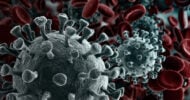by Peter J. Pitts
As the saying goes, the plural of anecdote isn’t data. That is unless the anecdote supports your theory. Here’s a personal anecdote — a story of how the system works.
Being adopted, I have no family history, so when I suffered through some late night chest pains I figured I’d better act on the warning signals. I called my GP and got a same-day consultation, resulting in a next-day referral to a cardiologist and a stress test. Diagnosis – arterial blockage and an immediate referral to NYU Medical Center for an angiogram. 48 hours later I had two stents and was home – writing this report.
My situation is not unique but, being in the business of healthcare policy, some of the things that happened to me are indicative of some broader themes.
1. Facts vs. fear. After being admitted into the cardiac unit, getting my wrist ID and giving some blood, my first visit was with a nurse practitioner who began her explanation of stents as follows, “You might have read some newspaper articles about how stents are over-used and dangerous. That’s crap. They save lives, they’re safe and it’s a lot more pleasant than open-heart surgery.”
This before she asked me what I did for a living.
2. The evils of pharmaceuticals. After the obligatory (and important!) lecture about the need to eat more healthfully and exercise more regularly, one of the resident’s said to me, “And we’re big believers in pharmaceutical intervention – don’t believe everything you read in the newspaper.”
This before he asked me what I did for a living.
3. Problems with the FDA. When I told the interventional cardiologist that I was a former FDA associate commissioner and was at the agency when the first drug eluting stent was approved, his comment was, “That’s something you should be proud of.”
That, despite all the middle-of-the-night poking and prodding (and my roommate’s bed-rattling basso profundo snoring) made my visit a more meaningful and memorable experience.
4. The cost of innovation. As I walked in my own front door a mere 26 hours after surgery, full of piss and vinegar and ready for action, I remembered my father. His first heart attack (at an age only slightly older than mine today) landed him in the hospital where his sternum was split open and a bypass performed. A dangerous operation followed by a lengthy hospital stay and a prolonged, home-bound period of recovery. That was then. The best there was at the time. Top-notch 20th century surgical technique and pharmaceutical therapy. It was very expensive and left him with a scar the size and shape of a Sonoran Gopher Snake.
Over 20 years later, all I have to remember my surgery by is a small catheter incision and a handful of booklets on heart-healthy nutrition.
Which I plan to read and act on.
Tennis anyone?
Peter J. Pitts is co-founder and president of the Center for Medicine in the Public Interest and a former FDA Associate Commissioner. He blogs at Drugwonks.
Submit a guest post and be heard on social media’s leading physician voice.









![Working patients and health care [PODCAST]](https://www.kevinmd.com/wp-content/uploads/Working-patients-and-health-care-190x100.jpg)
![Supporting medical resident families [PODCAST]](https://www.kevinmd.com/wp-content/uploads/Supporting-medical-resident-families-190x100.jpg)

![A tribute to primary care [PODCAST]](https://www.kevinmd.com/wp-content/uploads/A-tribute-to-primary-care-190x100.jpg)
